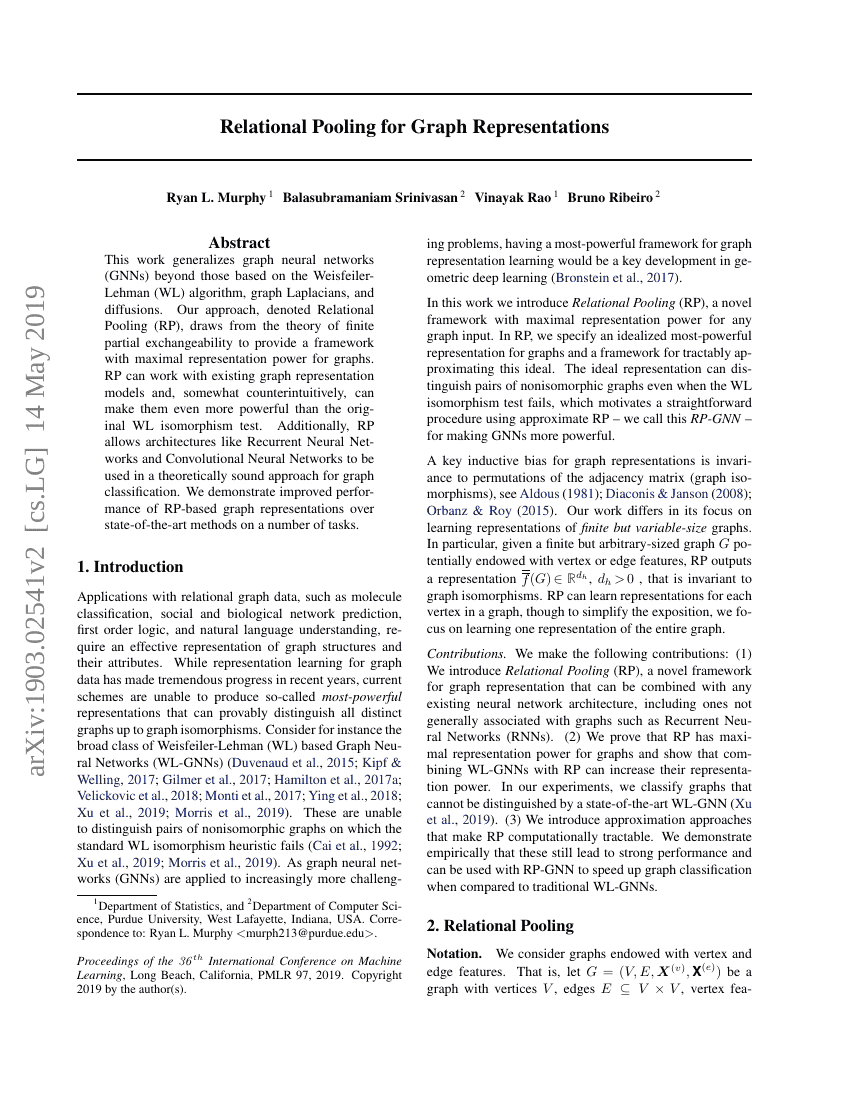Command Palette
Search for a command to run...
Ryan L. Murphy; Balasubramaniam Srinivasan; Vinayak Rao; Bruno Ribeiro

Abstract
This work generalizes graph neural networks (GNNs) beyond those based on the Weisfeiler-Lehman (WL) algorithm, graph Laplacians, and diffusions. Our approach, denoted Relational Pooling (RP), draws from the theory of finite partial exchangeability to provide a framework with maximal representation power for graphs. RP can work with existing graph representation models and, somewhat counterintuitively, can make them even more powerful than the original WL isomorphism test. Additionally, RP allows architectures like Recurrent Neural Networks and Convolutional Neural Networks to be used in a theoretically sound approach for graph classification. We demonstrate improved performance of RP-based graph representations over state-of-the-art methods on a number of tasks.
Code Repositories
Benchmarks
| Benchmark | Methodology | Metrics |
|---|---|---|
| drug-discovery-on-hiv-dataset | RNN-DFS | AUC: 0.627 |
| drug-discovery-on-muv | RNN-DFS | AUC: 0.648 |
| drug-discovery-on-tox21 | RNN-DFS | AUC: 0.748 |
Build AI with AI
From idea to launch — accelerate your AI development with free AI co-coding, out-of-the-box environment and best price of GPUs.